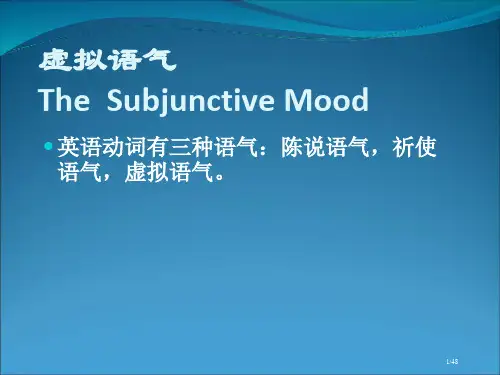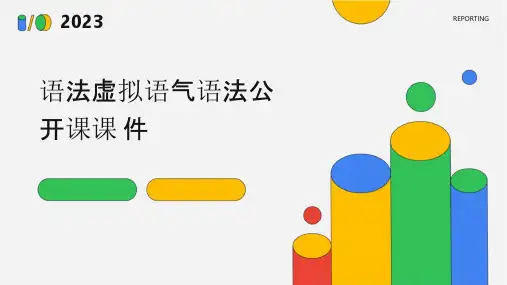A.Will allow B. B. should allow C.C. Would have allowed D.D. had allowed
22/48
补充三:倒装形式表示虚拟条件句
从句中有were ,had ,should或would等词语,能够将if省略, 同时were ,had ,should或would提至句首,组成倒装.表示 虚拟条件
25/48
( 二)在动词wish后面宾语从句中,表示 不可能实现愿望,其动词形式有三种
1 表示与现在事实相反愿望,谓语动词用过去式。 I wish I had time to read. I wish I knew her address.
26/48
2
表示与过去事实相反愿望,或表示已经发生一件遗憾 事,谓语动词用“had +动词过去分词”。
have been all right then. 假如你那时听了医生话,你那时就好了. (主句与从句发生时间同时.)
19/48
比如2:
If you had watered them more ,the crops would be growing still better.
假如你再给庄稼多浇些水,他们会长得更加好.(指现 在长得更加好.)
(1) If I should meet her, I would tell her. =should I meet her, I would tell her.(万一) (2) If I were in your position, I would do it better. =were I in your position, I would do it better.
B.C. was
D. were




